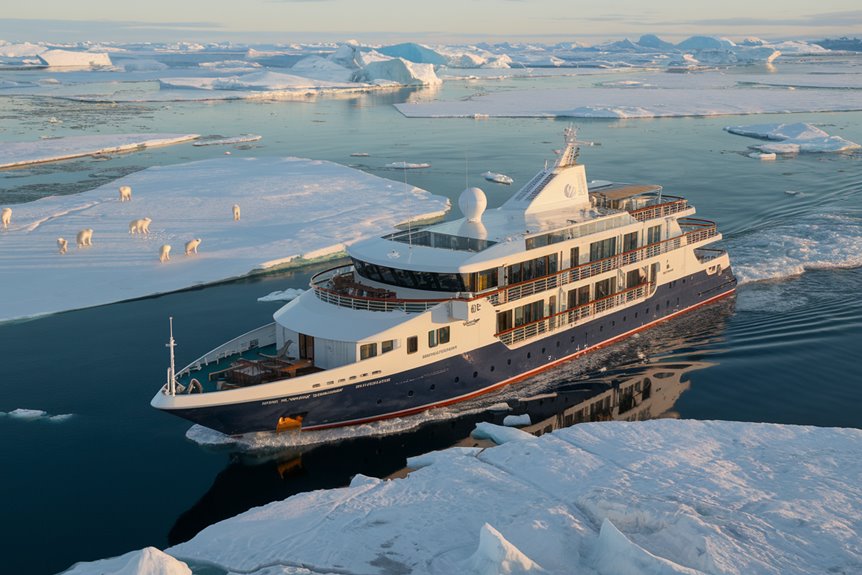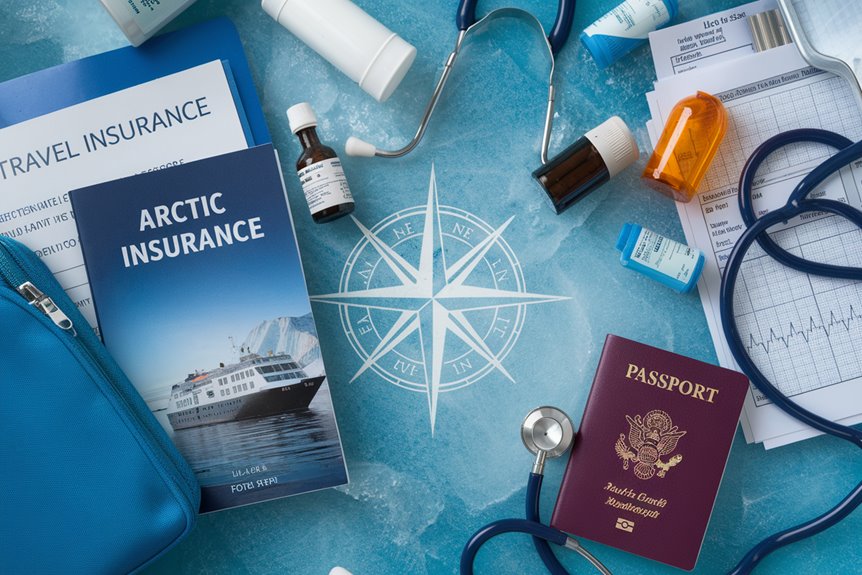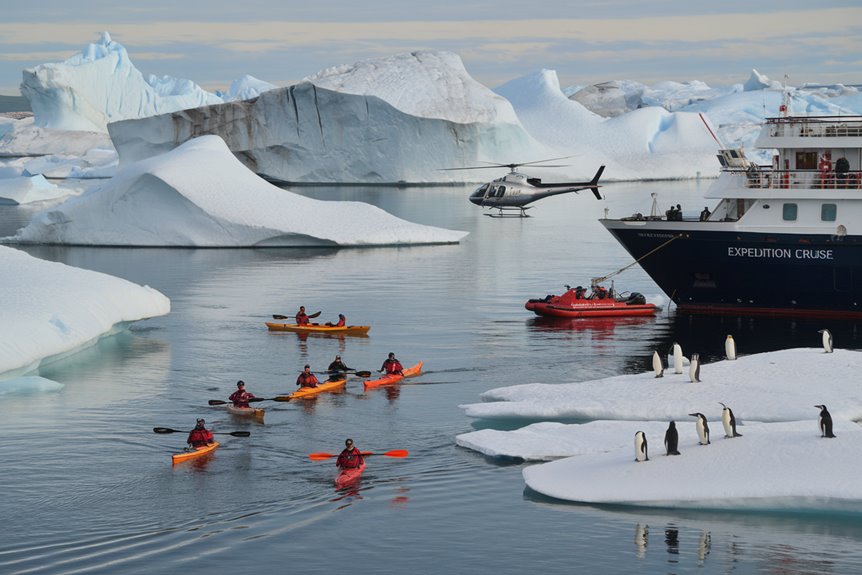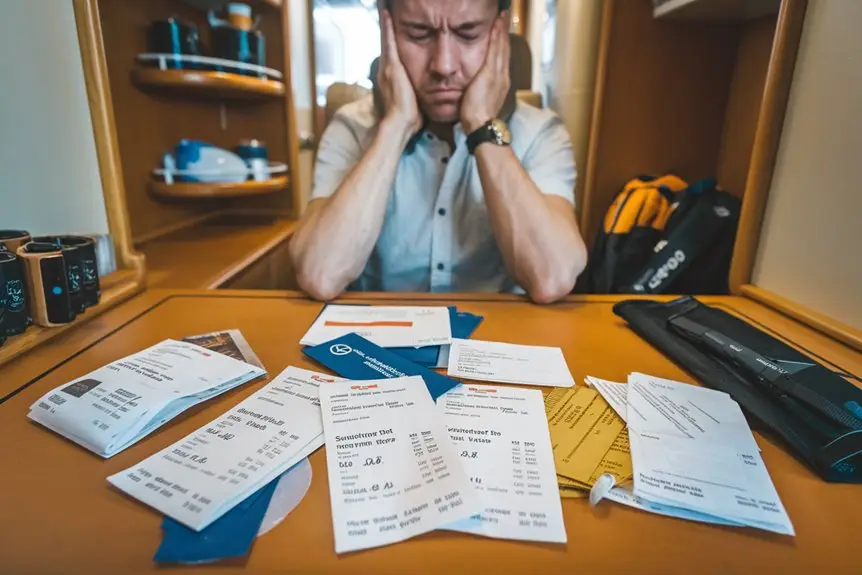You’ll need around £10,000 to £35,000 for a polar cruise, and that depends on which cabin you fancy and where you’re heading. The basic cost starts from £8,000, which sorts you out with your cabin, food and guided trips.
Remember to set aside £1,500-3,000 for proper cold-weather kit, plus £200-500 for special polar travel insurance. Extra bits like kayaking, sleeping on the ice, and photo workshops might set you back another £100-1,000 each.
Don’t forget to count in things like your flights, hotels before the cruise, and cover for emergency evacuations. Knowing all the costs upfront will help you get your polar trip sorted properly.
🐧 Polar Cruise Enquiry 🐻❄️
Our team of polar travel specialists have personally explored both the Arctic and Antarctic regions – from tracking polar bears in Svalbard to kayaking with penguins off the Antarctic Peninsula. Let us find the right polar expedition cruise for you.
Key Takeaways
- You’ll find base cruise prices range from £8,000 to £30,000 per person, and if you book early, you can save between 10-25%.
- Essential cold-weather kit will set you back £1,500-3,000, including a proper parka and waterproof boots, unless the cruise line gives them to you.
- You must get comprehensive travel insurance with emergency evacuation cover – it’ll cost between £200-800.
- Extra activities like kayaking, ice camping, and photography classes can add another £100-1,000 to your total spend.
- Don’t forget to factor in other costs such as hotels before and after the cruise, flights, visas, staff tips, and any medical check-up fees you might need.
Base Cruise Fares and Packages

When you’re planning a polar expedition cruise, you’ll find base fares generally start at £8,000 per person and can go beyond £30,000 for luxury suites on the best ships.
These prices normally include your cabin, all meals on board, guided trips and zodiac boat rides for spotting wildlife.
Most cruise companies have different levels of packages, from basic inside cabins to fancy suites with private balconies.
The simplest packages come with standard amenities, while top-tier ones include extras like butler service, first-choice boarding and special lounge access.
It’s worth booking early, as you might save 10-25% off normal prices.
Some companies also have cheaper rates for trips in early spring or late autumn, though the weather tends to be trickier during these times.
Essential Gear and Equipment

For polar cruises, you’ll need proper cold-weather kit that might set you back £1,500-3,000.
You can’t do without a waterproof and windproof expedition parka, warm waterproof boots, thermal base layers, and water-resistant trousers.
Make sure to pack good gloves, warm hats, and neck warmers.
You’ll want protective sunglasses with UV protection, waterproof rucksacks, and cameras that can handle harsh weather.
Most ships give you rubber boots for going ashore, but it’s worth bringing grip-enhanced boot covers for icy ground.
If you won’t use pricey gear like pro camera lenses often, consider renting them instead.
Some cruise lines include expedition parkas in their package, which can save you £300-500 on kit costs.
Travel Insurance and Medical Requirements

You’ll need proper travel insurance for polar trips – it’s not optional and usually sets you back £200-500.
Get a policy that’s made for far-off places and includes emergency evacuation (which could cost more than £100,000 if you’re not insured). The policy must cover activities in extreme weather too.
You’ll have to fill out medical forms and get your doctor’s approval before you go. Most companies want to see your jab records and full medical background.
Pack extra prescription medicine since there aren’t any chemists in polar areas. It’s wise to see your dentist beforehand – you won’t find any dental care on the ship.
Be upfront about any existing health issues with both your insurer and the expedition company.
Optional Activities and Add-Ons

You can join plenty of extra activities on polar cruises that’ll set you back £100-500 each.
Popular choices include kayaking, camping on Antarctic ice, snowshoeing, cross-country skiing, and helicopter rides. Book early though – spots fill up quickly.
If you fancy learning from pro photographers, workshops cost around £300-400.
Keen on kayaking? That’s £500-800 for several outings during your trip.
Fancy sleeping on the ice? Camping costs about £200-300 per night.
In the Arctic, you can go dog sledding for £150-250 or hop on a snowmobile for £200-400.
Think about what suits you best and what you’re fit enough to do.
Some activities, like polar snorkeling or scuba diving, need proper certificates and might cost up to £1,000 more.
Hidden Costs

When sorting out your polar trip, you’ll want to think about quite a few costs that aren’t obvious in the main price.
You’ll need proper travel insurance with emergency evacuation cover, which might set you back £400-800. Plus, you’ll need special polar kit like waterproof boots, insulated jackets and thermal layers – that could cost £800-1,600 if you haven’t got them already.
Other sneaky expenses include hotels before and after your cruise, flights abroad, visa charges, and tips for the expedition staff.
Keep in mind you’ll pay for currency exchange, satellite phone or internet use while on board, and getting to and from the ports.
It’s wise to put money aside for jabs, passport renewal if it’s due, and extra baggage fees for your polar gear.
Frequently Asked Questions
How Common Are Seasickness Issues During Polar Expedition Cruises?
You’ll probably feel a bit queasy during polar cruises, particularly when crossing choppy waters like the Drake Passage. Roughly 25-30% of passengers take travel sickness tablets during their trip.
What Is the Typical Age Range of Passengers on These Cruises?
While you might think it’s just for older folk, most polar cruises bring in quite a mix of people aged 45-75. You’ll spot busy working professionals and active seniors together, all getting excited about seeing amazing wildlife.
Are There Single-Occupancy Cabins Available for Solo Travelers?
Most expedition ships have single-occupancy cabins, but they tend to sell out fast. If you don’t mind sharing, quite a few cruise lines can match you with another passenger to help you avoid extra fees.
Can I Use Regular Mobile Phone Service During the Cruise?
Mobile signal info: Regular mobile coverage won’t work while you’re on your polar cruise. You won’t be able to use your usual phone service at sea, but the ships usually have satellite internet and phone packages you can buy.
How Much Free Time Is Typically Allowed for Independent Exploration?
You’ll usually get around 2-3 hours to wander about during shore stops, though it changes based on the weather, how safe the area is, and what your guide has got planned for each trip.
🐧 Polar Cruise Enquiry 🐻❄️
Our team of polar travel specialists have personally explored both the Arctic and Antarctic regions – from tracking polar bears in Svalbard to kayaking with penguins off the Antarctic Peninsula. Let us find the right polar expedition cruise for you.
